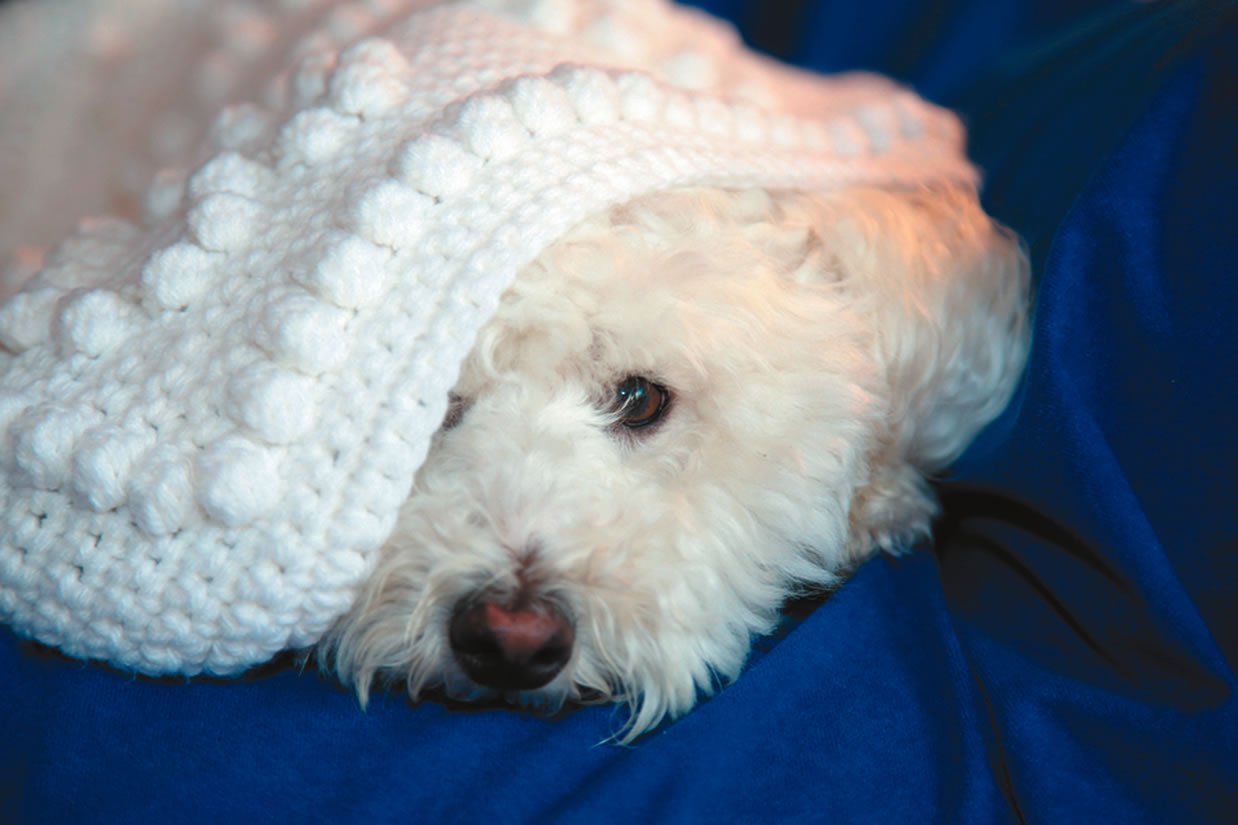
© mikeledray | Bigstock
A common concern that comes with the common cold is wondering whether your dog can catch it from you. But “dogs don’t get colds from people,” says Tufts veterinarian Elizabeth Rozanski, DVM. Human colds are generally caused by the rhinovirus, which does not thrive in a dog’s sinus or respiratory system. “In very rare instances, dogs can get the flu from people,” Dr. Rozanski says, but in general, respiratory illnesses are not zoonotic, meaning they don’t jump species.
If dogs can’t catch your cold, what can they catch?
Usually, the dog equivalent of a cold is what is commonly referred to as kennel cough, Dr. Rozanski says. Highly contagious between dogs, it tends to occur when a dog is around another dog or dogs who have not been vaccinated against the bacteria that can cause it. (People are not as lucky as dogs in this respect— there is no vaccine against our common cold.)
Ironically, kennels almost always require vaccination before dogs are boarded at those facilities; thus catching so-called kennel cough is less common at these places than it used to be. It might be more likely to be transferred from one dog to another at a dog park. The intense, hacking cough, which sounds more like a honk, is frequently accompanied by a runny nose, sneezing, and low-grade fever. Fortunately, kennel cough generally resolves on its own, like our colds. You just want to keep your pet away from other dogs during the duration of the “cold” so that other pets don’t get sick.
Of course, not all coughing or runny noses are caused by kennel cough. A number of respiratory illnesses in dogs come with cold-like symptoms. Many are not serious, but one of them is the flu, which in almost all instances is caught from other canines. Unfortunately, the flu can be hard to recognize at the outset, Dr. Rozanski says. “You hear about people with the flu who sometimes die from it because they don’t recognize that it’s more than a cold, and it’s the same with dogs, who can get sick enough from another dog to succumb,” she points out. Fortunately, there is a flu vaccine for dogs, just like there is a kennel cough vaccine, and in locales where the canine flu is going around, your veterinarian may recommend it.
A cold symptom in the form of persistent coughing can also indicate heart disease as opposed to a bacterial or viral infection. “Any Doberman that is coughing, I always worry about,” the doctor says. “While a Doberman may develop a cough because of an infection, it is much more common for them to get a life-threatening heart condition called dilated cardiomyopathy.” Other breeds with a persistent cough may also have heart disease or chronic bronchitis.
How to calculate risk
As serious as certain symptoms that mimic cold symptoms might be, Dr. Rozanski advises that for the most part, you can apply to your dog “the same rule of thumb you would apply if you have kids at home. If he is running around, eating and drinking, and symptoms are mild and not interfering with his overall functioning,” he’s likely to have a self-limiting infection that will resolve on its own. But lethargy or unwillingness to engage, accompanied by “cold” symptoms or a cough that won’t subside, are signs that warrant a trip to the veterinarian.
You also want to include your dog’s age in your tally of symptoms and behavior. You would not take a wait-and-see approach with an infant who had symptoms of a cold, nor would you wait several days with an elderly person. Likewise, if your puppy or aged dog is having respiratory difficulty, don’t delay getting him to the veterinarian’s office.
Consider your dog’s breed, too. If a Doberman or brachycephalic dog such as a pug is having what seems like a respiratory ailment, get him to the vet right away. You don’t want to wait with a brachycephalic breed because in many cases, their shortened and pushed-in noses makes breathing difficult, and the problem can worsen suddenly in periods of hot weather. This is a potentially serious issue that can be confused with a cold symptom.
Follow these rules of thumb, and you’ll be able to separate “wait-and-see” from “go right now.”





